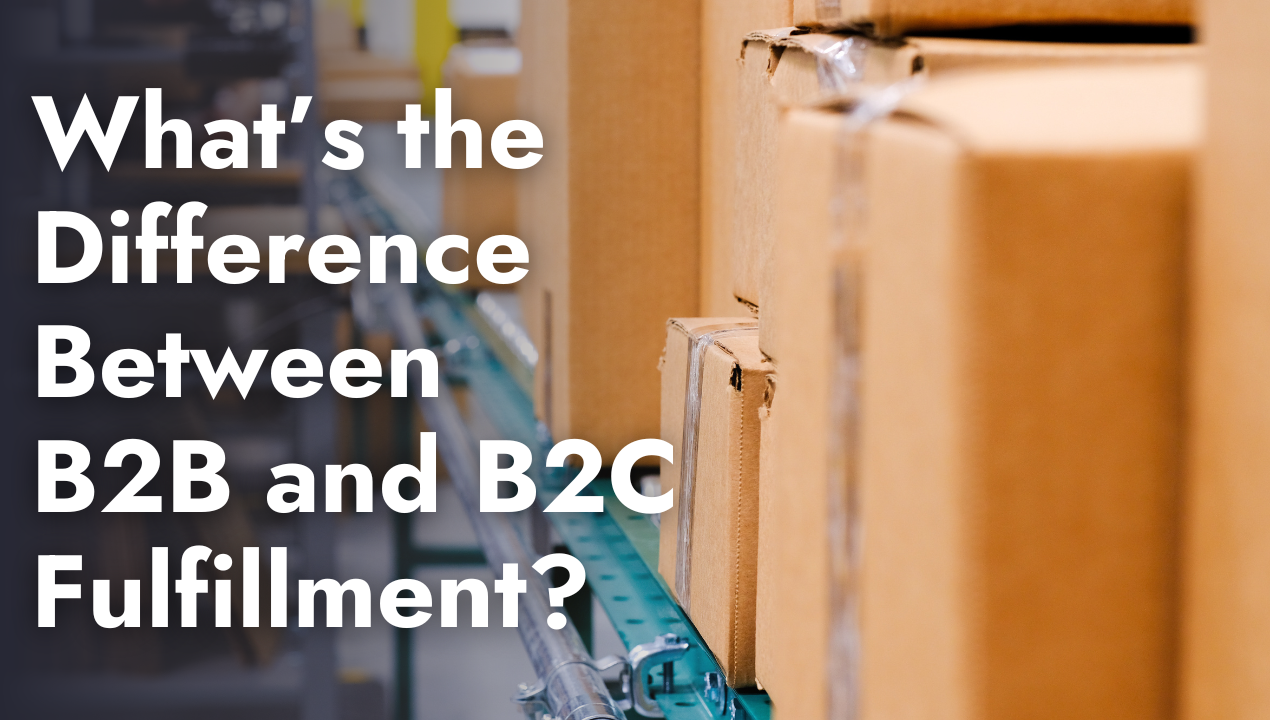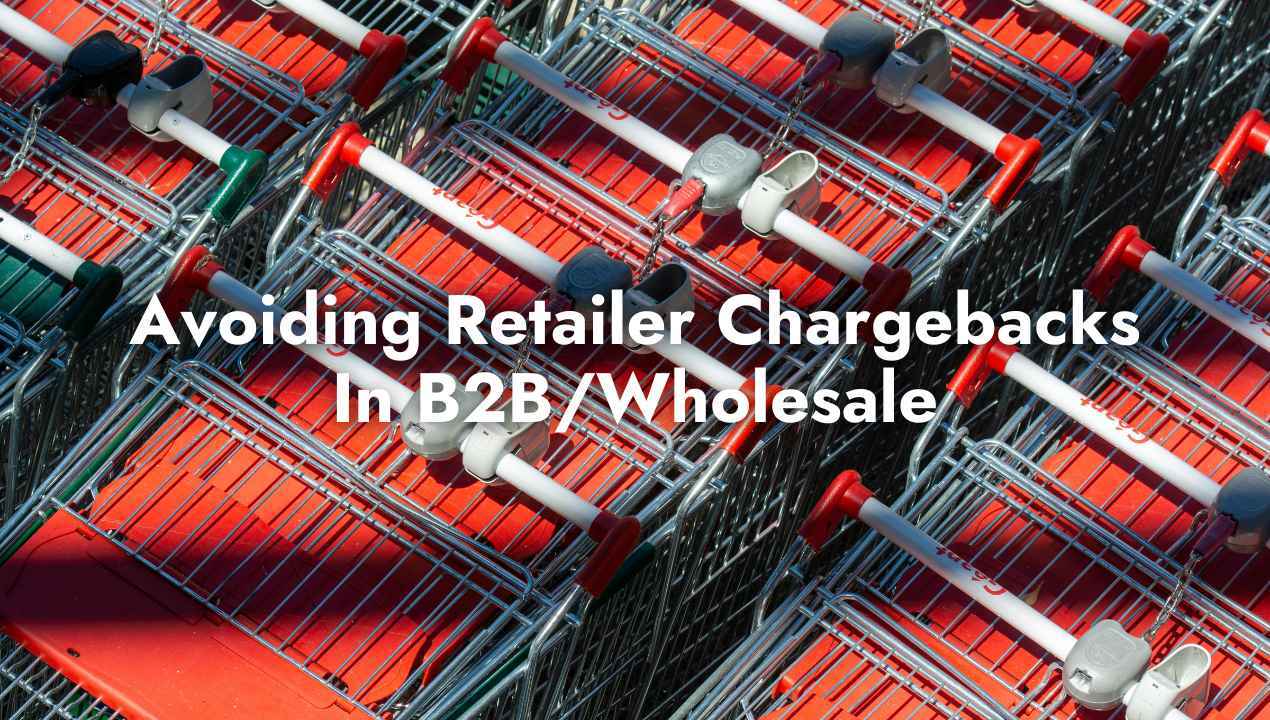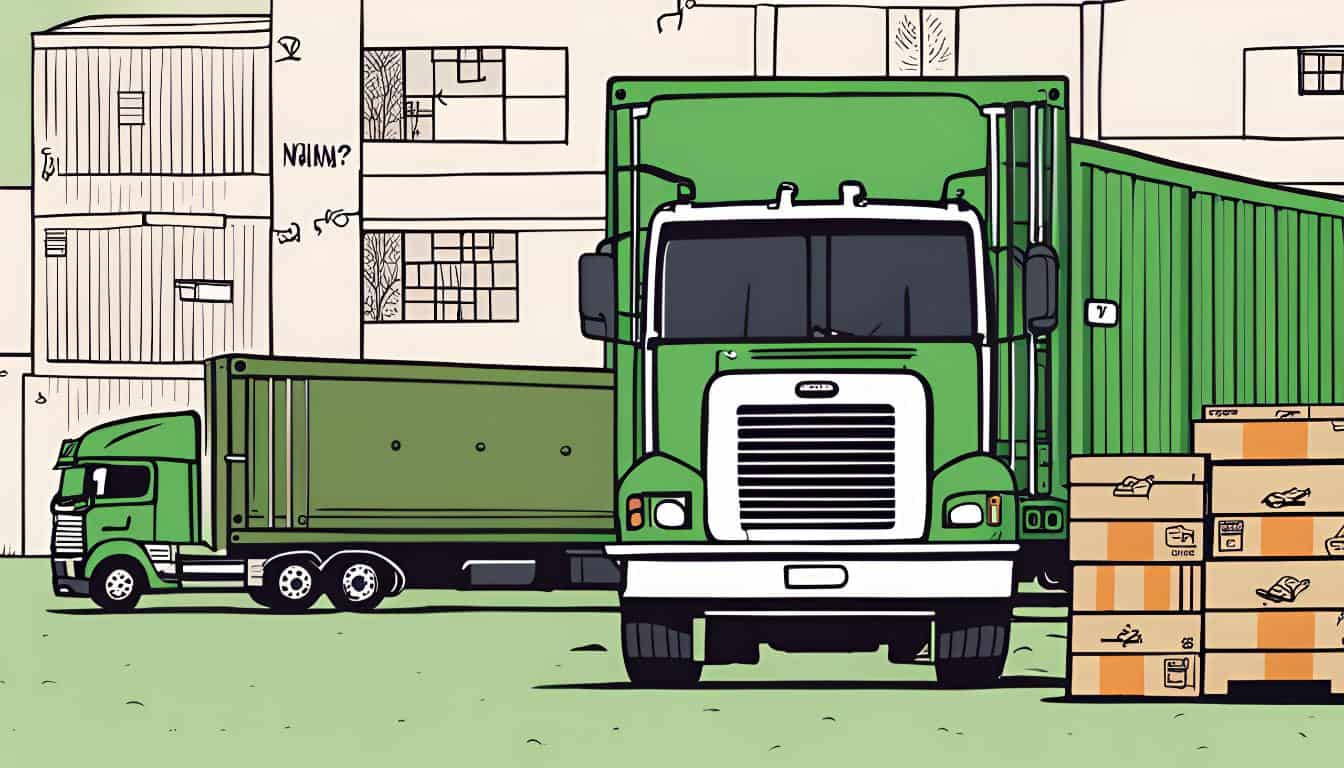Share this
Unpacking the Difference Between B2B and B2C Order Fulfillment
by Rin Mosher on May. 1, 2024

Most ecommerce businesses find their initial success in the business-to-consumer (B2C) market, having mastered the art of individual sales and personalized customer experiences. However, for some companies, venturing into the business-to-business (B2B) or wholesale sector can be a viable path to scaling even more. But expanding into B2B from B2C is not just about increasing order sizes; it requires different logistics, customer relationship dynamics, and fulfillment strategies. So, what exactly is the difference between B2B and B2C order fulfillment?
In this article, we explore the difference between B2B and B2C order fulfillment by comparing the processes, technologies, and tasks involved with each to help you prepare for expansion into the business-to-business space.
What Is B2B Fulfillment?
B2B fulfillment refers to the process of picking, packing, and shipping product orders destined for business clients, also referred to as retail partners. Common examples of B2B retail partners for ecommerce companies include large brick-and-mortar retailers like Walmart, Target, and Ulta, but B2B partnerships happen between ecommerce companies and retailers across many industries.
These B2B partnerships typically involve a contractual agreement where the business partner agrees to purchase products from the ecommerce company in bulk for resale or use in their operations. If the partnership proves successful, these products will be reordered in bulk at regular intervals.
What makes B2B fulfillment different from B2C fulfillment is the focus on business-to-business relationships and the complexities that come with them. Customer communications, order quantities, and delivery protocols are all geared toward commercial transactions.
An ecommerce business successfully operating in a B2B channel may work with multiple B2B clients, depending on business model, industry, and product offerings. With the orders being so large-scale, each client relationship is valuable and the fulfillment process involves more complicated logistical planning and coordination. Success in the B2B space can be lucrative but is ultimately a matter of how well these relationships and the supply chain are managed.
What Is B2C Fulfillment?
B2C fulfillment involves processing and shipping orders directly to individual consumers. The business-to-consumer model is characterized by a high volume of transactions with smaller quantities per order for individual use. B2C orders make up a majority of ecommerce sales as online platforms have become a standard consumer shopping preference.
Because B2C orders are smaller in quantity and are being delivered to individuals, the fulfillment process prioritizes speed to meet consumer expectations. Customer relationships are typically managed at scale through automated systems and digital marketing rather than through individualized attention.
The Difference Between B2B and B2C Order Fulfillment
As a whole, the goal of fulfillment is to prepare and ship customer orders quickly, efficiently, and accurately.
In both B2B and B2C channels, this starts with product delivery. Pallets of inventory are received, verified, and entered into a warehouse management system for organization and tracking.
From there, fulfillment processes diverge based on who the end customer is. When preparing B2B orders, the fulfillment team must follow each B2B retail partner’s unique receiving requirements, which are outlined in their routing guides. These orders are arranged on new pallets in bulk, then shrink-wrapped and loaded into a truck for delivery to the B2B customer's designated location, which is usually a distribution center or retail store. If the order is prepared or delivered incorrectly – on the wrong kind of pallet or during the wrong delivery time slot, for example – the B2B client might impose chargebacks or other penalties on the ecommerce business.
In B2C fulfillment, efficiency and speed are prioritized due to the smaller order sizes and consumer expectations for quick delivery. Advanced warehousing technologies and optimized picking strategies are used to efficiently handle the high volume of orders, reducing the need for excessive movement and speeding up the overall process. With B2C fulfillment, there are no complex routing guides to navigate, and if a customer is unsatisfied with their order, they typically address it through straightforward returns or exchanges.
Let’s take a closer look at the unique considerations and key differences between B2B and B2C fulfillment processes:
Order Management and Fulfillment Technology
Every large-scale fulfillment center needs technology to maintain efficient and accurate performance. However, the specific tools involved differ between B2B and B2C order fulfillment.
Because B2C ecommerce sellers often use more than one platform to capture sales across different audiences, purchases come in from multiple online sources – such as online stores, social commerce platforms, and online marketplaces.
B2C-specific order management systems combine key order data from each of these places into one system, which acts as a central point of reference for fulfillment status. Solutions that offer WooCommerce, Magento, Amazon, and Shopify fulfillment integration can help keep inventory quantities consistent across multiple channels, as well as ensure consistency between varying shipping requirements, packaging standards, and return policies.
In the case of B2B, purchase orders are typically made in bulk through electronic data interchange (EDI) portals. The buyer, seller, and fulfillment center use this integrated channel to exchange multiple documents detailing order quantity, shipping notices, and delivery confirmation, among other important information.
While EDI systems are necessary for B2B fulfillment, they are also quite complicated to set up, requiring abundant investments of time and capital to get up and running. There are multiple steps involved in the process, from initially assessing organizational needs to establishing protocols to selecting a third-party value-added network (VAN) service provider. This can be challenging for any business, but especially for those that are smaller and without significant in-house IT resources or expertise.
Order and Unit Volume
B2B customers, whether they are wholesalers or retailers, typically place orders in large quantities. These bulk purchases are often made by the pallet, with each pallet containing hundreds or even thousands of units. This large-scale ordering affects fulfillment in multiple ways.
The most significant is workload. Bulk orders are more labor-intensive due to their size and often require coordination among multiple employees. Fulfillment teams must manage the efficient use of forklifts and allocate ample space for storing and processing each pallet. That job becomes even more difficult when multiple retailers are involved. The warehouse will need enough space to pack orders as they come in – often at different times – and the capacity to store excess inventory. Both elements are essential to maintaining efficient operations and avoiding stockouts.
Since B2C orders are smaller in size – usually no more than the number of products a single person would need – they don't require as much heavy lifting or space as B2B orders. Fewer employees can handle a larger number of orders, and the warehouse will usually be equipped with smaller slotted storage shelves for easy access to commonly ordered individual products. Racks are also used to store additional pallets of inventory that have yet to be broken down.
Order Packing
When B2C orders are prepared, the way they’re packed is the way the customers receive them – packaging, branding, and dunnage included. Businesses place a strong emphasis on this ‘unboxing experience’ for its ability to influence customer satisfaction and brand perception. They often have standard packing processes based on the product, type of order, or even the receiving customer. For example, some ecommerce companies offer gift wrapping services that customers can add on for an additional fee, which requires specific packaging materials and labeling. Other businesses have different packing requirements depending on the size or fragility of the item being shipped.
Meanwhile, B2B orders are so large that products are usually kept in cases. While aesthetics don’t matter like they do in B2C, preparation still does. Pallets of incoming inventory must be broken down and arranged per an individual retailer’s routing guidelines. These packaging and labeling standards exist to maintain consistency for receiving parties, and they’re different for every retailer. That can make fulfillment difficult on a large scale. It’s about more than simply moving boxes from one pallet to another – packaging material, pallet type, and barcode placement guidelines for every shipment can differ from the last. With chargebacks and other penalties at stake, fulfillment teams must have a well-organized system in place to ensure that each individual B2B order is packed correctly.
While this may seem like a simple job, there's a lot more to it than what meets the eye. Extensive rules, or routing guides, exist to maintain consistency for businesses that receive large quantities of inventory at once. Every process is different from the next with respect to pallet arrangement, labeling, delivery timelines, packing slips, and more. If the fulfillment team makes a mistake in any aspect of vendor compliance – such as packing pallets incorrectly or placing labels in the wrong places – they open themselves up to potential chargebacks and other penalties like refused deliveries. Chargebacks, which usually total thousands of dollars, are particularly damaging to a seller’s immediate financial situation because they are directly deducted from invoices rather than imposed as a separate outstanding fee.
Shipping Method
An order's journey from Point A to Point B can look different depending on its buyer. B2C orders often go through multiple shipping carriers and methods before reaching their final destination. Sellers and customers may have specific delivery preferences for orders, like expedited shipping for time-sensitive items or free shipping for high-value purchases.
B2B clients, on the other hand, have predefined shipping preferences that will be discussed in their contracts or outlined in their routing guide. Often, the ecommerce business will be responsible for arranging freight to deliver the B2B orders to the retail partner, but it’s also common for larger retailers to arrange for freight pick up through their own services. In such cases, the trucks follow an external pick-up schedule that fulfillment teams must be ready to accommodate. Failure to do so can result in delayed deliveries, chargebacks, and ultimately animosity in the seller-buyer relationship.
When the seller is responsible for arranging freight, the deliveries must still adhere to the retail partner's routing guides. They usually identify a list of approved carriers, as well as designated windows for scheduling delivery appointments, and specific billing instructions. If these aren't followed, it could result in refused deliveries and chargebacks
With the importance of cost-effectiveness and sustainable service being equal, sellers benefit from obtaining quotes from multiple carriers. Well-established fulfillment providers with b2b fulfillment and freight forwarding services can help their clients do just that by negotiating competitive rates with the various ground transport companies they work with.
Inventory Management and Demand Forecasting
Seasonality, varying customer needs and impulses, sales, and promotions come together to make demand forecasting one of the hardest elements of B2C inventory management. It’s entirely possible for demand to be low one month and unusually high the next. Businesses must have responsive, agile processes established in order to reliably meet this changing demand while avoiding the risk of stockouts.
The reorder point formula is just one example of many tools that can help make forecasting easier. Considering factors like lead time, sales volume, and safety stock, it provides an approximate estimate of how much inventory needs to be ordered and when.
By contrast, B2B volume is much more predictable. Customers usually place orders for the same SKUs in bulk on a regular schedule (weekly, monthly, etc.), which fulfillment teams can rely on to plan stock and labor needs. Contractually agreed-upon order maximums and notice periods add more certainty to fulfillment.
But with that being said, there is still plenty of potential for change in B2B inventory management. It’s not uncommon for a retailer to decide to substantially increase monthly order volume or frequency when it really likes a product. Sellers must be able to deliver more inventory while maintaining the expectations established in their hard-earned contract in order to keep the relationship strong.
Whether they focus on B2C or B2B, every business can benefit from using advanced reporting tools to manage fulfillment. These software solutions can perform a range of valuable jobs, including contract management, supply chain KPI analysis, and forecasting.
How to Successfully Fulfill B2B Orders
Comparing the difference between B2B and B2C order fulfillment, it’s easy to see how packaging orders can get complicated fast. In either case, it’s almost always easier to work with a third-party logistics (3PL) service provider.
3PLs offer specialized solutions catered to the specific needs of both B2B and B2C fulfillment. Working with one means being able to benefit from industry expertise while enjoying the efficiency and cost savings offered by cutting-edge, technology-enabled processes.
Look for a track record of positive client relationships in a B2B 3PL. Their reputation will speak volumes about their capacity to provide business-level service. Fulfillment companies often publish case studies outlining specific times they’ve met or exceeded their clients expectations. You can also refer to B2B-specific online review platforms for a better idea of how individual 3PLs
Scalability is a crucial consideration when choosing a B2B or B2C fulfillment provider. In both cases, a 3PL should have sufficient warehouse space and infrastructure to adapt to difficult conditions, whether those are sudden spikes in order volume or contracts with multiple retailers.
Advanced warehouse management systems (WMS), inventory tracking, and real-time reporting capabilities can enhance operational efficiency for any type of fulfillment operation. B2B sellers in particular need to ensure the 3PL they choose has a robust EDI platform in place. Integrations with ERP and B2C ecommerce platforms like Shopify and Magento are similarly beneficial to seamless fulfillment.
Finally, the quality of support a 3PL offers shouldn’t be underappreciated. Choosing a partner who demonstrates a readiness to address issues and collaborate on solutions is crucial, especially during times of tight deadlines or unexpected challenges.
With the difference between B2B and B2C fulfillment being clear, there's one thing that these two models have in common, and that's the importance of a well-established process.
A qualified 3PL like Shipfusion can accommodate both B2B and B2C orders with ease. Learn how you can take advantage of our advanced fulfillment technology and highly qualified staff by getting in contact with sales today.
Share this
You May Also Like
These Related Articles

Avoiding Retail Chargebacks In B2B/Wholesale Fulfillment

How to Keep Up with B2B Ecommerce Growth

What Does Freight Mean, Really?
- April 2025 (9)
- March 2025 (26)
- February 2025 (26)
- January 2025 (37)
- December 2024 (16)
- November 2024 (23)
- October 2024 (22)
- September 2024 (27)
- August 2024 (9)
- July 2024 (8)
- June 2024 (5)
- May 2024 (8)
- April 2024 (8)
- March 2024 (6)
- February 2024 (6)
- January 2024 (5)
- December 2023 (3)
- November 2023 (3)
- October 2023 (5)
- September 2023 (4)
- August 2023 (2)
- July 2023 (1)
- June 2023 (4)
- March 2023 (2)
- October 2022 (1)
- September 2022 (5)
- August 2022 (4)
- July 2022 (7)
- June 2022 (4)
- May 2022 (4)
- April 2022 (6)
- March 2022 (2)
- February 2022 (1)
- January 2022 (3)
- December 2021 (2)
- November 2021 (4)
- October 2021 (2)
- September 2021 (5)
- August 2021 (4)
- July 2021 (4)
- June 2021 (3)
- May 2021 (2)
- April 2021 (3)
- March 2021 (3)
- February 2021 (3)
- January 2021 (2)
- December 2020 (4)
- November 2020 (2)
- October 2020 (4)
- September 2020 (2)
- July 2020 (5)
- June 2020 (4)
- May 2020 (2)
- April 2020 (2)
- March 2020 (4)
- February 2020 (1)
- December 2019 (1)
- May 2018 (1)
- March 2018 (2)
- February 2018 (3)
- January 2018 (3)
- November 2017 (3)
- July 2017 (4)
- March 2017 (3)
- February 2017 (5)
- January 2017 (3)
- December 2016 (4)
- November 2016 (6)
- October 2016 (6)
- October 2015 (1)
- September 2015 (1)
- June 2015 (3)
- May 2015 (3)
- August 2014 (1)
- July 2014 (1)
- March 2014 (1)
- February 2014 (1)